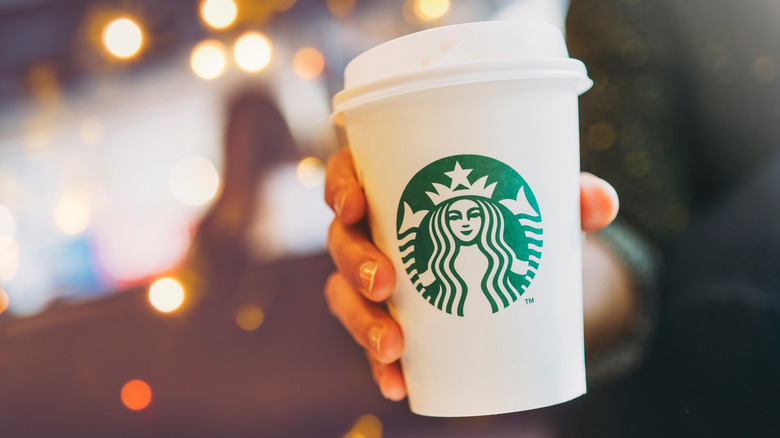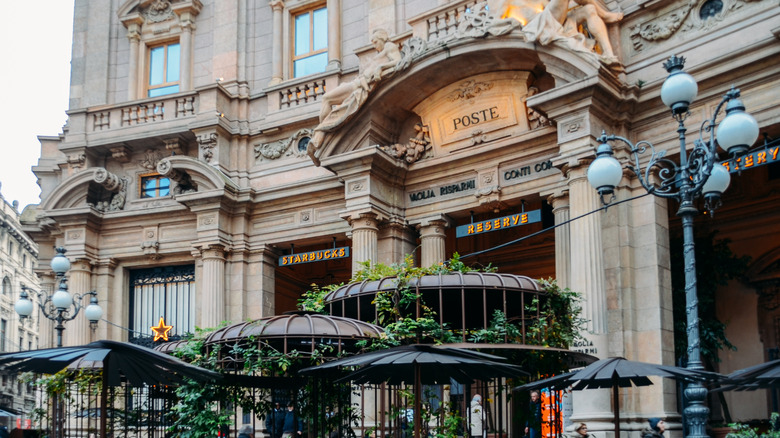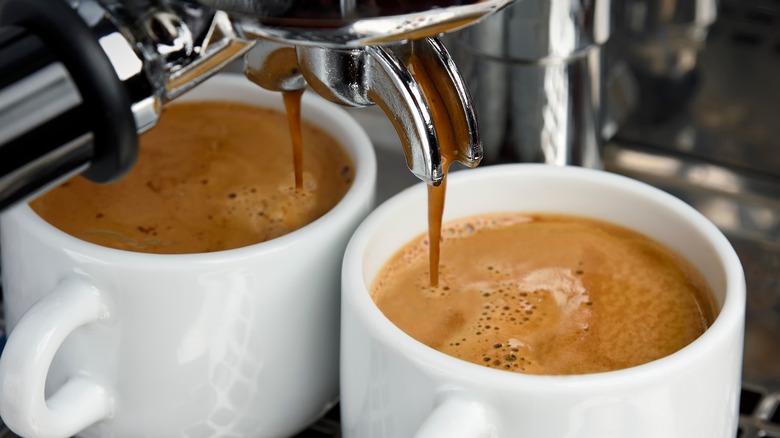The Basic Drink That's Starbucks' Top Seller In Italy
Starbucks CEO Howard Schultz makes no secret of the fact that Starbucks was inspired by Italy's coffee houses, and he even dialed in to Starbucks' Q4 2022 earnings call from Milan. He said: "It was 40 years ago, walking the beautiful streets of Milan, that the inspiration for the possibilities of what Starbucks could one day be and mean around the world first struck me."
Starbucks didn't make the decision to enter Italy lightly; CNBC says it took the coffeehouse chain 26,000 stores in 75 countries as well as experience gathered over decades to make its move — and with good reason. Italians are very particular about when they take their coffee and how it is drunk. Per Eataly, mornings kick off with a milky coffee in the form of a cappuccino, a caffè latte, or a latte macchiato, to be enjoyed with breakfast. But after 11 a.m., the milky coffees disappear, and in their place, Italians order espressos — all single shots, all consumed multiple times over the course of a day.
Eataly even stands firm about giving the doppio (double espresso shot) a hard pass, as it's not as common in Italy. As one Rome-based reporter put it: "The whole transaction is brief, social, and affordable, rarely costing more than €1.00," per Eater. This interaction sounds nothing like a typical Starbucks experience, where you can make endless customizations to a frappucino or order off the secret menu, so how did the chain survive in Italy?
A calculated move to Italy
When Starbucks decided to make its move into the Italian market, CEO Howard Schultz indicated the company would make its move "with great respect," saying: "I think Italy is such a special place. I am so respectful of the Italian coffee heritage and the Italian culture, and I think we had to earn that respect, opportunity, and I think over the years we got to the point that we are now ready to come," per CNBC.
But Starbucks' debut didn't exactly go as planned. A move to spruce up the plaza opposite to Milan's cathedral in a landscaping project went sour as it was discovered that Starbucks had paid for it. The reveal resulted in an act of vandalism where trees were set on fire. Other Italians may not have been as hostile, but they were prepared to be unimpressed. "We are happy the way we are. We don't need to be invaded by American scenery. We already have McDonald's and that's enough," a 70-year-old pensioner told CNBC.
Still, Starbucks persisted with its plans to open the store. It would be the first of 30 Roastery stores, located close to where the controversial landscaping project took place. Schultz was told he had to win over the locals — not the visitors looking for a slice of home. Italian designer Brunello Cucinelli told Schulz that the key to success was authenticity, and the brand's best-selling drink in Italy proves just that.
The single shot prevails
Given all this, it may — or perhaps may not — come as a surprise to find out what Starbucks' bestselling beverage in Italy is, because it appears to have come as a surprise for Starbucks CEO Howard Schultz as well. During the Q4 2022 earnings call, Schultz revealed: "Our top-selling beverage is actually a solo espresso, validating the quality of our coffee and the relevance of Starbucks customer experience that has defined us since Starbucks' founding in 1971." It may be a far cry from the top sellers at home, but it speaks to the success the American coffeehouse giant now enjoys in a land that wasn't keen to see them coming.
Schultz's exuberant comment may still need some context. In 2020, CBI — which is supported by the Dutch Ministry of Foreign Affairs — said that independent coffee bars make up about 90% of Italy's thriving coffee market, but coffee chains do exist. Surprisingly, the country's largest chain is McCafé, which has managed to thrive alongside the likes of Bottega del Caffe and Caffe Vergnano.
All signs point to a surprising success story for Starbucks in Italy. As Schultz put it: "Italians have embraced Starbucks."


